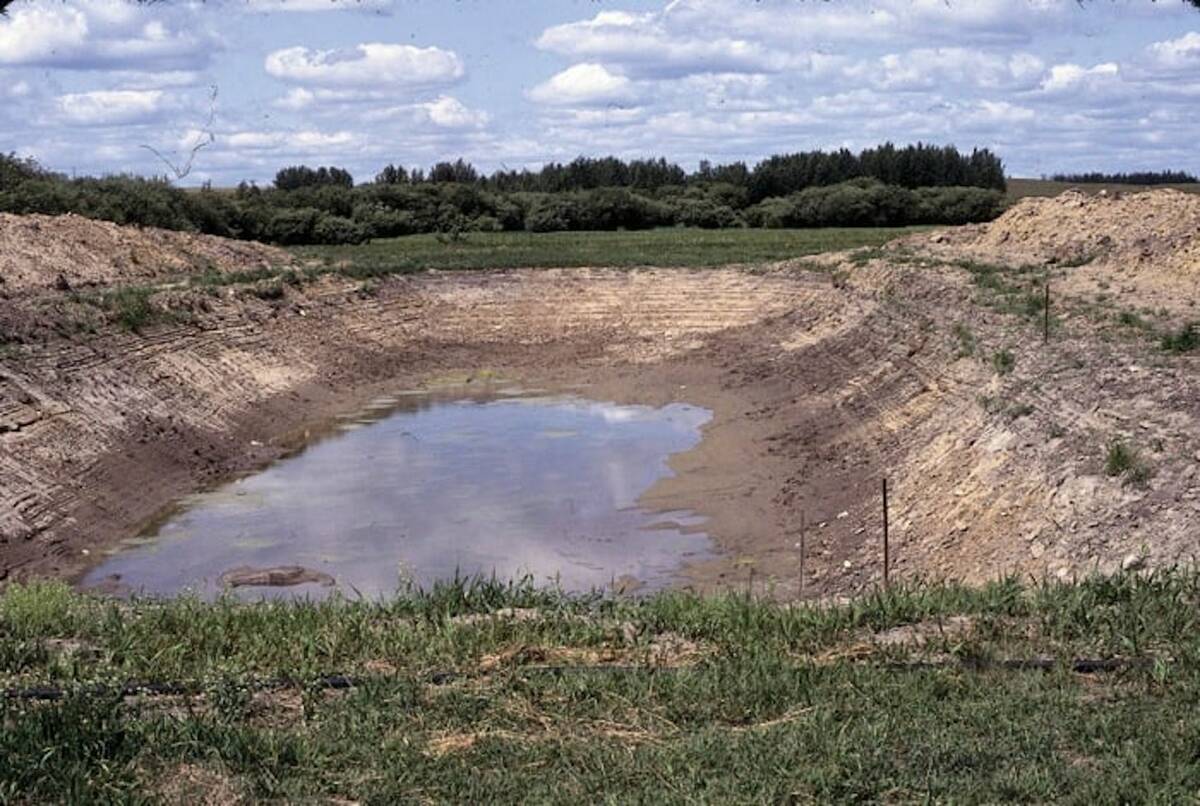Immunization is the usual way to prevent disease in ordinary circumstances, but vaccines are considered a last resort during a foot-and-mouth epidemic.
Veterinarian Joyce Van Donkersgoed says vaccinated animals continue to show antibodies when tested, which causes their country of origin to receive a lower health status and forfeits its ability to export meat.
“If you take a blood test, you can’t tell if that animal was infected or just responding immunologically to the vaccine,” she said.
It is better to eliminate the disease without vaccination, with quarantine and slaughter being the preferred methods.
Read Also

Dry summer conditions can lead to poor water quality for livestock
Drought conditions in the Prairies has led to an decrease in water quality, and producers are being advised to closely monitor water quality for their animals.
There are at least seven different strains of the highly contagious disease.
“If you vaccinate against one type and it is not the right type, there is no protection. You have to know what kind of virus is affecting the cattle in the country.”
Another problem is that vaccinated animals may still become infected. If this happens, they become carriers of the virus but do not show clinical symptoms.
“They become shedders of the virus.”
The virus can survive and spread in urine, feces, erupting lesions, breath and milk.
While animals may not necessarily die from foot-and-mouth, symptoms make it painful for them to eat and walk. Dairy cows with infected udders suffer when milked.
If a country opts for a vaccine, a ring vaccination is attempted where nearby animals within a certain radius of an infected area are vaccinated.
Van Donkersgoed said Canadians need to be concerned about this epidemic, which continues to spread daily. Thousands of people travel back and forth between North America and Europe every day.
“Animal movement has been shut down, but you can’t shut down people movement,” she said.
The virus is fairly stable and can persist in mud or manure for up to 30 days. It can travel on the wind for up to 250 kilometres.
It survives in nasal passages for up to 36 hours. A trans-Atlantic flight takes eight hours so the virus could easily survive on people’s skin, hair, shoes, clothes or luggage.
People also need to remember this is a zoonotic disease.
“Humans can get infected, but it is very rare.”
People who caught it were in direct contact with infected animals. People can’t become infected by eating meat or drinking pasteurized milk.
Symptoms include a slight cold or a mild case of blisters on the hands, feet and mouth similar to cankersores or cold sores.

















